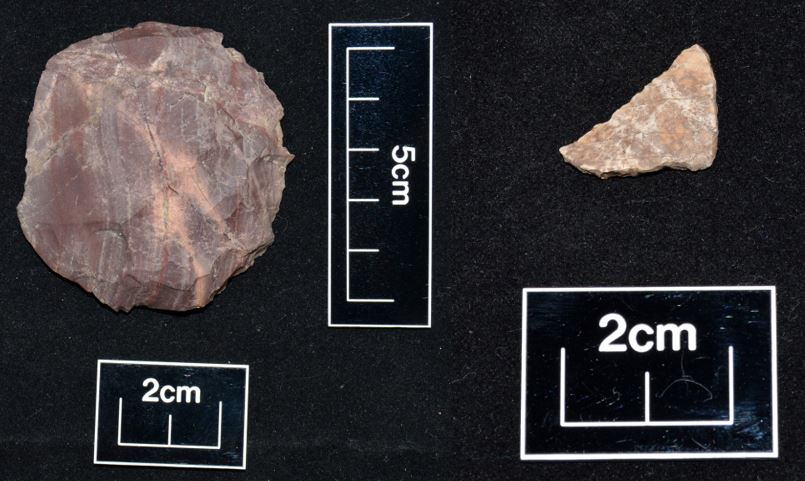In February and March 2021, Jabree was involved in the Department of Transport and Main Roads (TMR) Howard Creek Causeway Upgrade project in Wongawallan. Subsurface, surface and salvage archaeological investigations revealed a total of 11,995 artefacts. The artefacts were diverse in type, and included stone flakes, cores and a variety of tools. Artefact composition was that of chert, quartz, quartzite, silcrete, greywacke, sandstone, volcanic and chalcedony materials.
In collaboration with Jabree, In the Groove Analysis conducted use-wear and residue analyses on a sample of 14 stone artefacts from the Howard Creek assemblage. The artefacts sent for analysis included a geometric microlith, a backed bladelet, Bondi points, a hammerstone, notched tools, scrapers and a ground axe. The analyses were undertaken in June 2021 and aimed to gather a more in-depth understanding about the activities that occurred at the Howard Creek site.
The analysis procedure, which included digital microscopy and biochemical staining techniques, indicated that some of the artefacts had been used for plant and animal processing along with bone working activities at the site. Specific evidence of plant fibrecraft and/or medicinal activities, animal hunting and butchery have been revealed.

The information gathered from the scientific analyses was considered within the broader site excavation context, including in situ artefact recording and predictive modelling. From this cross-examination, evidence suggests that the activity of bone working took place throughout the entire period of the site’s use, and that the site was likely used for an extended period of time. The combined insights have contributed to the Howard Creek site being classified as a highly significant, long-term Aboriginal campsite. It is indicated that the campsite is from the Middle-Late Holocene period, with the Holocene period being classed as approximately the last 11,700 years of history.
Featured image: View from Area 5 (the central area) of the project, facing south.